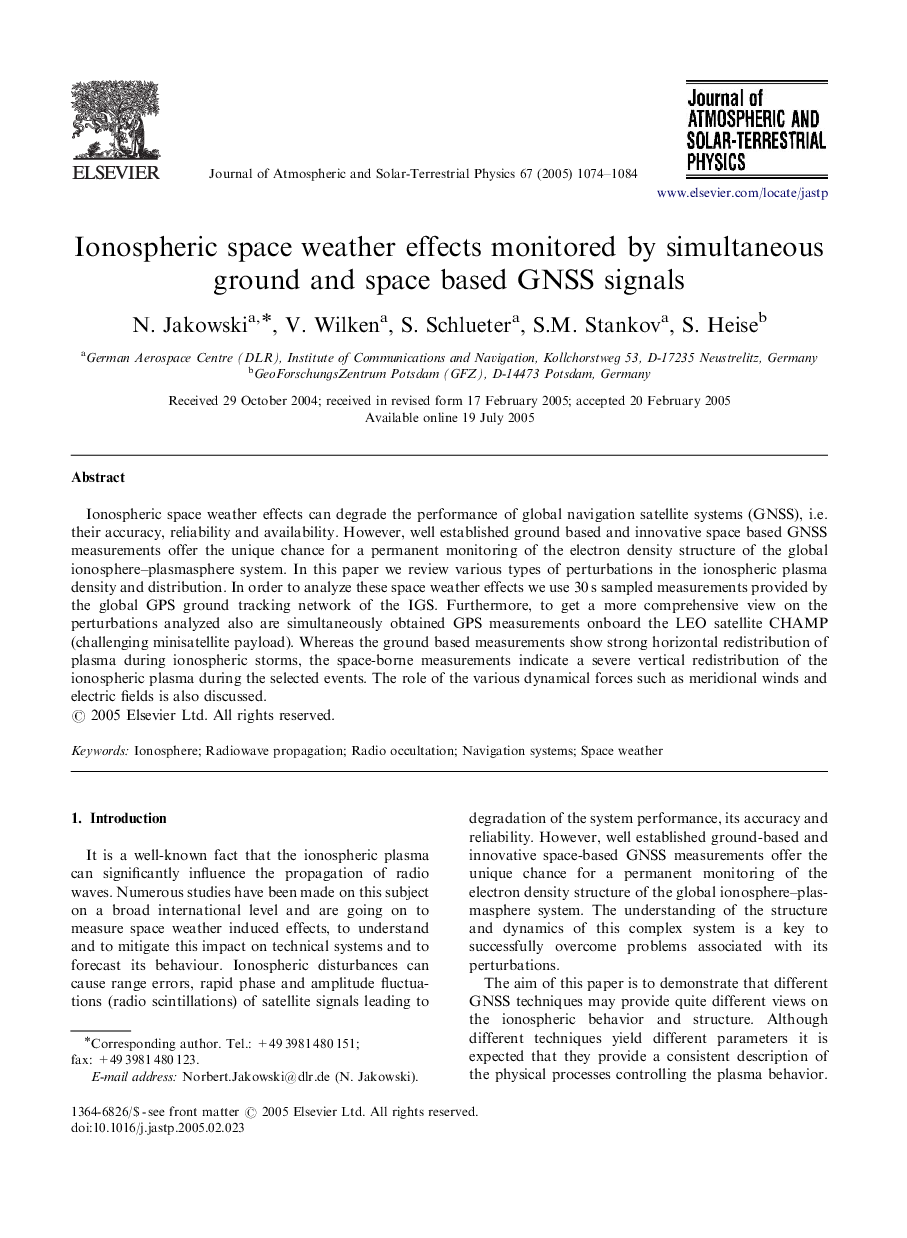| Article ID | Journal | Published Year | Pages | File Type |
|---|---|---|---|---|
| 10703980 | Journal of Atmospheric and Solar-Terrestrial Physics | 2005 | 11 Pages |
Abstract
Ionospheric space weather effects can degrade the performance of global navigation satellite systems (GNSS), i.e. their accuracy, reliability and availability. However, well established ground based and innovative space based GNSS measurements offer the unique chance for a permanent monitoring of the electron density structure of the global ionosphere-plasmasphere system. In this paper we review various types of perturbations in the ionospheric plasma density and distribution. In order to analyze these space weather effects we use 30Â s sampled measurements provided by the global GPS ground tracking network of the IGS. Furthermore, to get a more comprehensive view on the perturbations analyzed also are simultaneously obtained GPS measurements onboard the LEO satellite CHAMP (challenging minisatellite payload). Whereas the ground based measurements show strong horizontal redistribution of plasma during ionospheric storms, the space-borne measurements indicate a severe vertical redistribution of the ionospheric plasma during the selected events. The role of the various dynamical forces such as meridional winds and electric fields is also discussed.
Related Topics
Physical Sciences and Engineering
Earth and Planetary Sciences
Geophysics
Authors
N. Jakowski, V. Wilken, S. Schlueter, S.M. Stankov, S. Heise,
